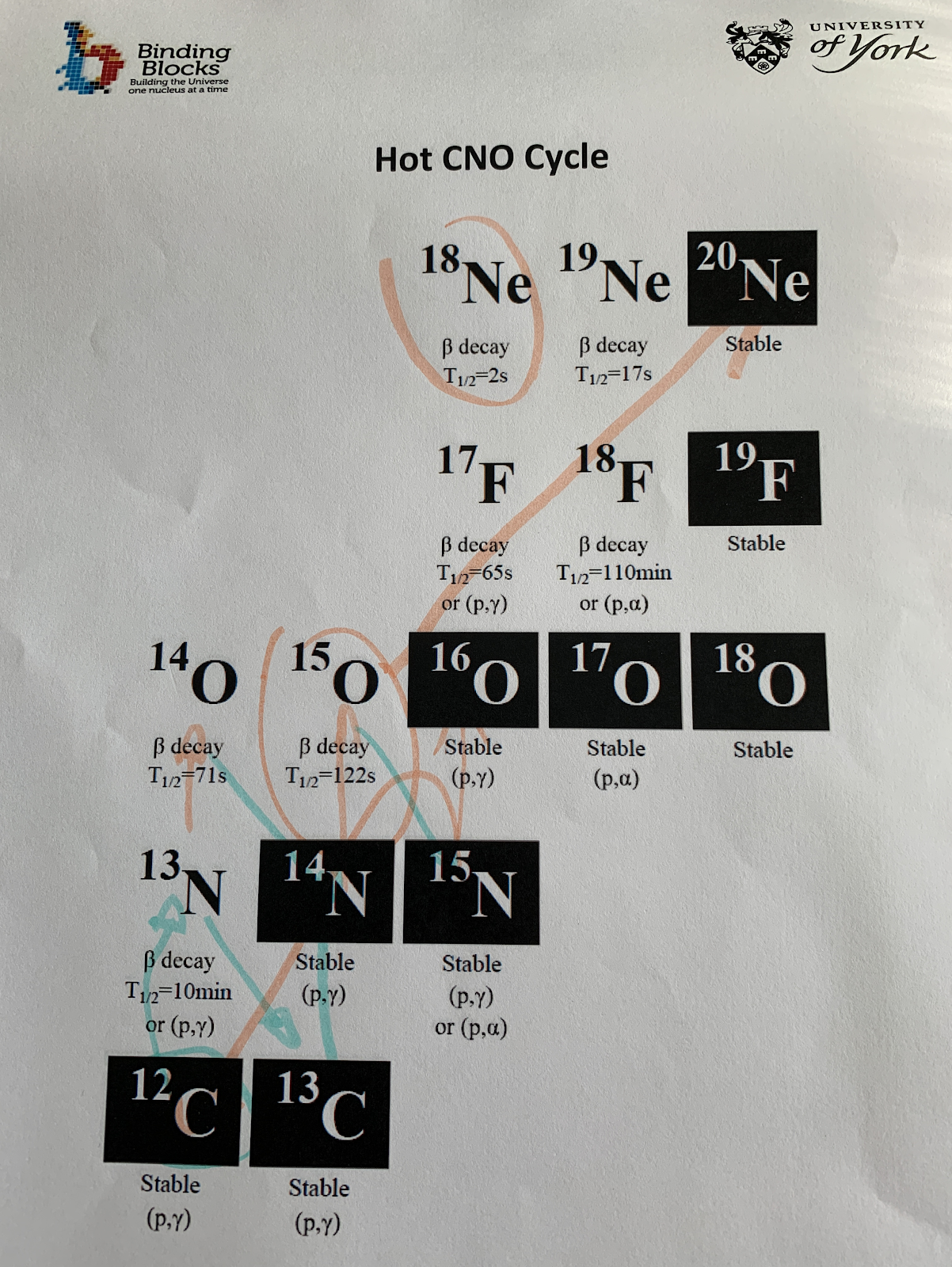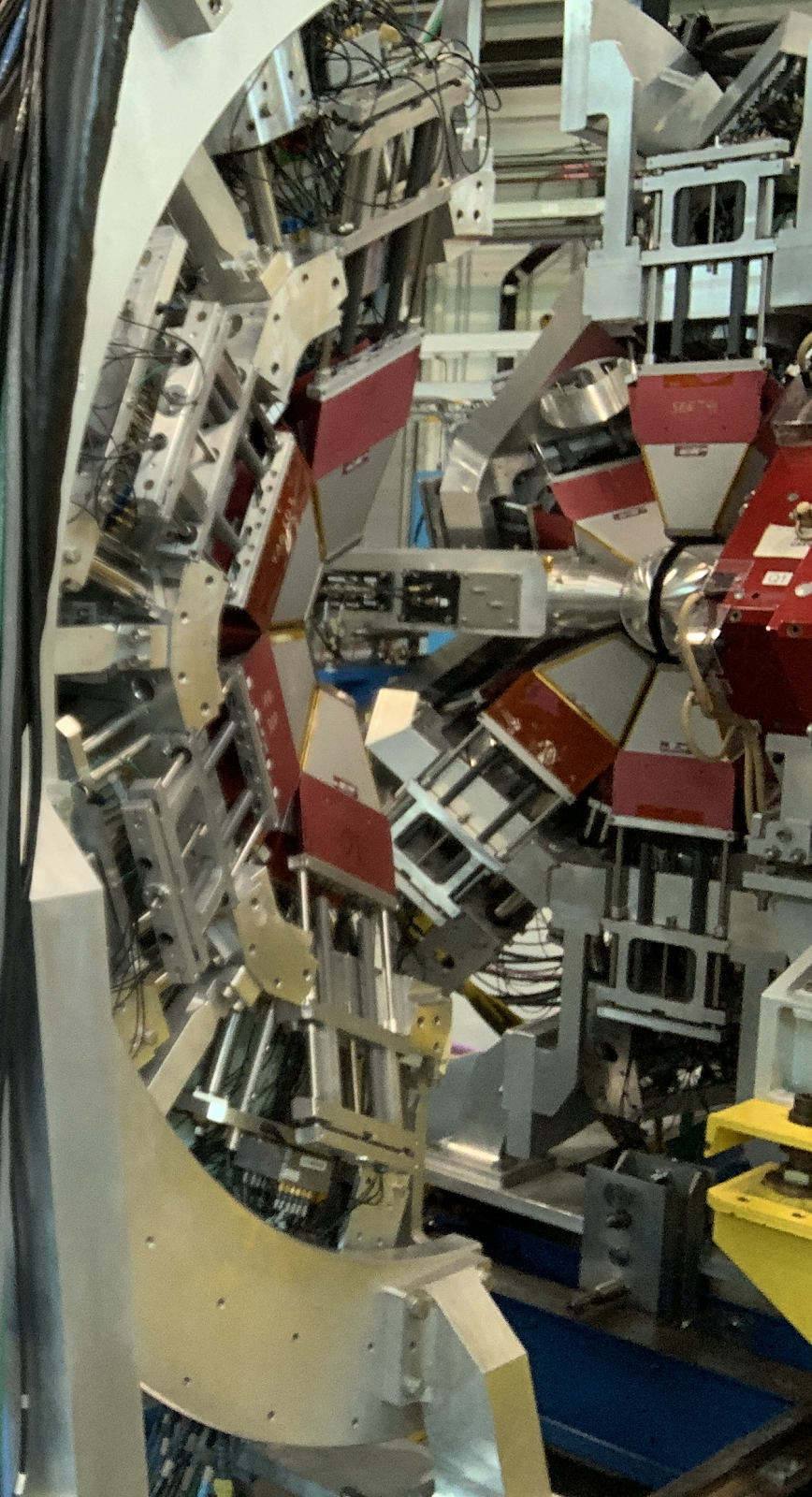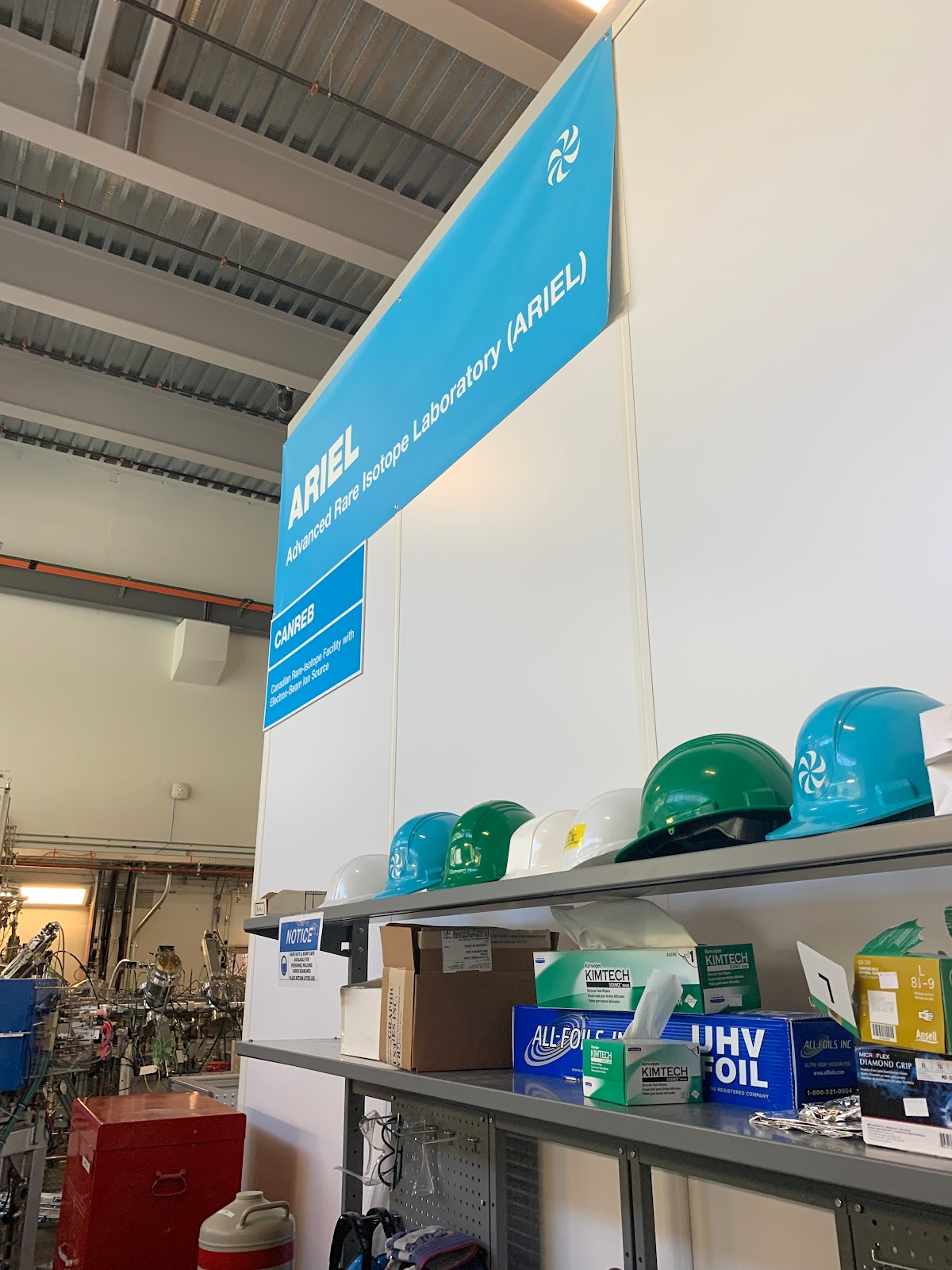TRIUMF Day 3 - Binding Blocks Masterclass
Today, I had the opportunity to speak with Dr. Christian Diget, of the University of York, and two of his grad students, Cameron Angus and Jennifer Sanchez Rojo. Together, they ran me through the Nuclear Physics Masterclasses at https://sites.google.com/york.ac.uk/bindingblocks/pre-16 for grades 9-10 students and https://sites.google.com/york.ac.uk/bindingblocks/post-16 for grades 11-12 students.
Together we went through Module 1: Energy and Decay with a focus on how they use Lego blocks to create a section of the chart of radionuclides.
Here, the heights represent the mass excess of the nuclide. From there we can combine atoms to figure out how much energy would be released in a fusion process (such as the ones inside stars). This approach gives students a very tangible way of determining binding energies (each layer of Lego bricks is approximated to 25TJ/kg) as opposed to the painful formulas and excessive number of digits in each value.
We then talked about a little game that students can play using the Hot CNO Cycle. Have students stand on individual pages with each of the isotopes shown below.
Starting everyone on Carbon-12 they then have to flip a coin or roll a dice to see when they are hit with a proton from the proton beam, moving them to Nitrogen-13. There they must start flipping a coin again to see when they are hit with another proton and can move up to Oxygen-14 or they can choose to wait the 10 mins to flip a coin and see if they decay. This process continues and at the end of 15-20 mins of playing students should find that most get stuck on Oxygen-14 and Oxygen-15 while a few make it to Neon-20 and are able to "escape." This activity helps get across the probabilistic nature of radioactive transformations (I won't use "decay" after what I learned at CERN).
Of particular interest to me was Module 5: Medical Physics where students can work to develop a treatment plan using particle therapy to cure a patient's cancer. This is something that I've wanted to develop for my classroom since going to CERN and learning about this application from Dr. Manjit Dosanjh. I feel that this module can give me a good starting point in developing a medical physics resource that will be more meaningful to students and expose them to the possibilities that are out there that so few people have even heard about.
After our session, Cameron took me to the ISAC II facility to show me what he's currently working on and I wish I could bring my class into the lab to show them what physics can look like!
I really feel that working at a place like TRIUMF would never get boring. There are so many fascinating areas to work on and explore that every day could hold a new adventure and a new collaboration. It's even looking more and more likely that as physicists partner with chemists and biologists to work through radionuclide treatments for cancer and hadron therapy that they'll beat medical professionals to the goal of curing cancer. This is something that most students don't think about. They figure that if they want to cure cancer that they must become a medical doctor, but that just isn't the case. Hopefully, I can use what I've learned at previous experiences and this week to help inspire my students that there are lots of exciting opportunities in the world of physics!






Comments
Post a Comment